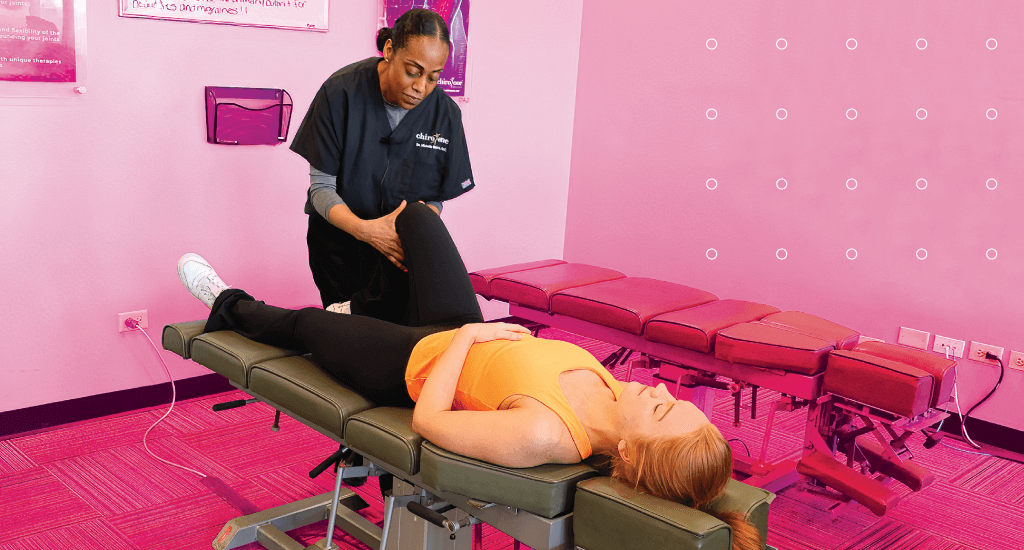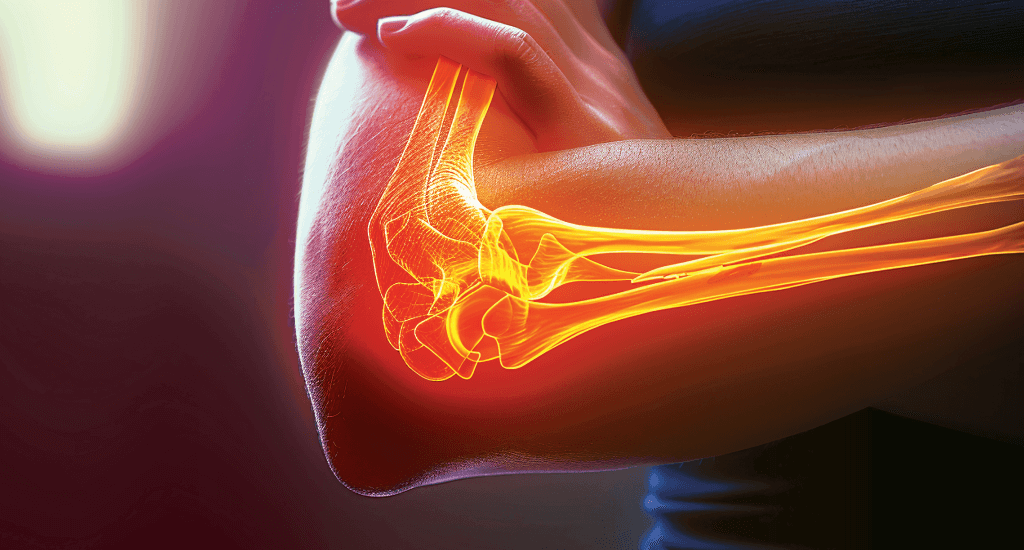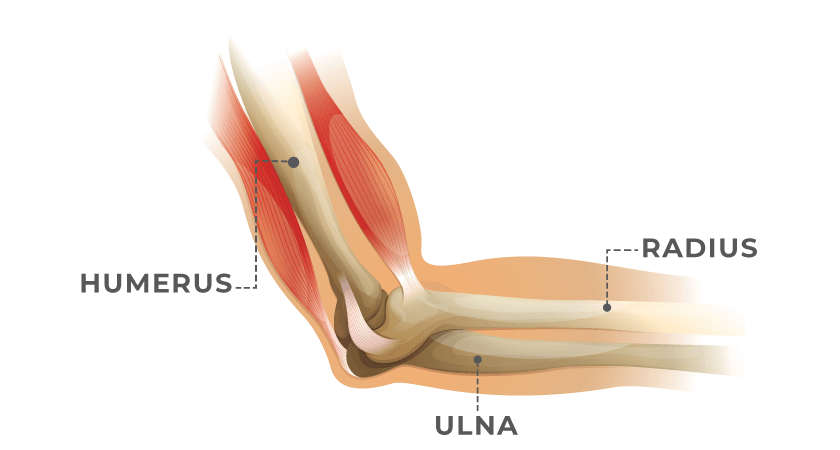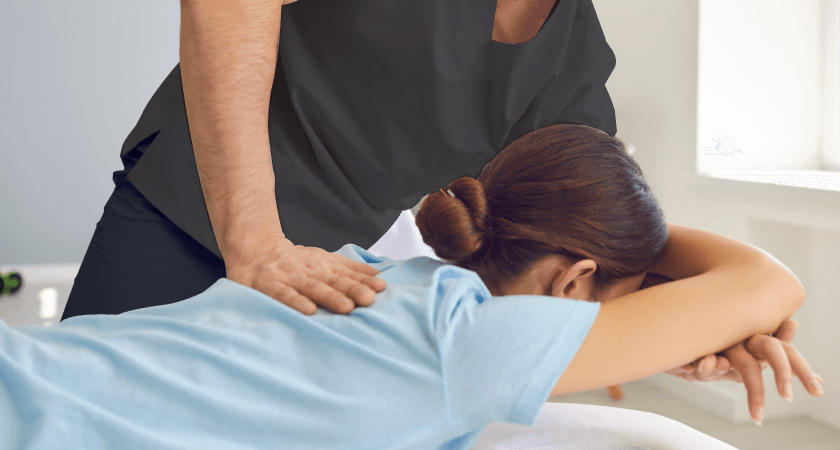
How to Treat Joint Pain: Should You See a Chiropractor?
From sprains and strains to overuse injuries, find out how chiropractic care can relieve joint pain, and whether it may be right for you.

One of the great mysteries of life is why so many of us find ourselves dealing with pain and inflammation from what sounds like a sports injury – when we don’t play sports at all. A prime example that we see in our clinics often is Tennis Elbow, also known as lateral epicondylitis, a painful form of tendinitis that is common to tennis players of course, but which can affect just about anyone – athlete or not.
Tennis Elbow is caused by over-use and repetitive movements involving your arm, something most of us do have in common whether we pick up a racket or not. Tennis Elbow can be acute (caused by overuse that triggers inflammation, likely short-term) or chronic, caused by degeneration of a tendon brought on by long-term overuse and/or repetitive movement.
Acute tennis elbow is caused by inflammation in the tendon and bony bump at the outer part of the elbow (did you just reach down and feel for it? We did.) This inflammation happens because of repetitive stress on the forearm muscles that can cause tiny tears. All that stress causes the tendons of the elbow to become irritated and injured, resulting in inflammation in the elbow and down the forearm into the wrist – and of course, leading to pain.
But what puts stress on those forearm muscles? Here are some of the most common causes of Tennis Elbow – see if any of them sound familiar:
While racquet sports players are of course at higher risk (golfers too, in fact – known as medial epicondylitis) there are several occupations that involve repetitive movements that can stress the forearm muscles and increase your risk of Tennis Elbow. 90% of cases involve patients that do not play sports at all. Below are some examples:

While many overuse and chronic conditions are more likely to affect people as they age, the group most at risk for developing Tennis Elbow is people in the above occupations between the ages of 30 and 50.
In most cases, Tennis Elbow results from tendon degeneration (as the result of repetitive stress.) When tendons break down, it causes normal tissue to be replaced by scar tissue, which in turn makes the area become weaker and more prone to additional injury.
Your elbow joint is held together by muscles, ligaments, and tendons and connects three bones:
Here’s how it all works together:
The bony bumps at the bottom of your humerus called epicondyles, while the bony bump on the outside of the elbow are called the lateral epicondyle. Your forearm muscles extend your wrist and fingers while your forearm tendons — often called extensors — attach the muscles to bone on the lateral epicondyle.
Your Extensor Carpi Radialis Brevis (ECRB) helps stabilize your wrist when your elbow is straight. When your ECRB is weakened from overuse, microscopic tears form in the tendon where it attaches to the lateral epicondyle. The result? You guessed it: inflammation and pain.
The position of the ECRB can make it vulnerable to damage. As the elbow bends and straightens, the muscle rubs against those bony bumps, causing wear and tear on the muscle over time.
Remember that bony knob on the outside of your elbow? Tennis elbow will cause pain there, right where the injured tendons connect to the bone. The pain is sharp and occurs with movement, rather than an aching pain. Many people also experience pain in the upper or lower part of the arm, and possibly weakness, too.
If your symptoms turn out to be Tennis Elbow, you’ll probably experience pain when you:

Chiropractic care can relieve the pain of Tennis Elbow and help reduce inflammation. The first step is an examination to make sure your condition is, in fact, tennis elbow and not some other dysfunction (like joint infection – a very rare but serious condition requiring antibiotic treatment by your MD).
Once your doctor confirms that your symptoms are caused by Tennis Elbow, they’ll determine the cause (which habits and movements are contributing to the inflammation) and set a course of treatment that not only addresses any misalignments and imbalances in the arm but also in your spine. Poor posture can lead to compensation, which in turn leads to straining the muscles we use that makes you more prone to injury. Adjustments help the healing process by stimulating the nervous system to reduce pain and inflammation
While you may expect to receive a chiropractic adjustment for your Tennis Elbow symptoms, your doctor may start with your spine before addressing the misalignment of the elbow joint. It’s these misalignments in the elbow joint, wrist and forearm, that can cause muscles in the forearm to compensate – and ultimately cause pain.
Chiropractic adjustments are hyper-targeted to reduce pain and nerve irritability, and increase range of motion by realigning your ligaments, tendons, and bones to improve your body’s function. Once they are lined up properly, your elbow will be in the optimal position for healing.
Clinical trials have demonstrated the relationship between tennis elbow pain and cervical pain and how chiropractic adjustment can help resolve both.
Regular adjustments can help you maintain optimal function and alignment and reduce or prevent inflammation. You can also prevent Tennis Elbow by:
Ready for relief from Tennis Elbow pain? Find a Chiro One clinic near you or schedule an appointment today.
Subscribe and get news, articles & offers sent right to your inbox each month.
"*" indicates required fields
By subscribing you are agreeing to the Terms and Conditions and Privacy Policy.